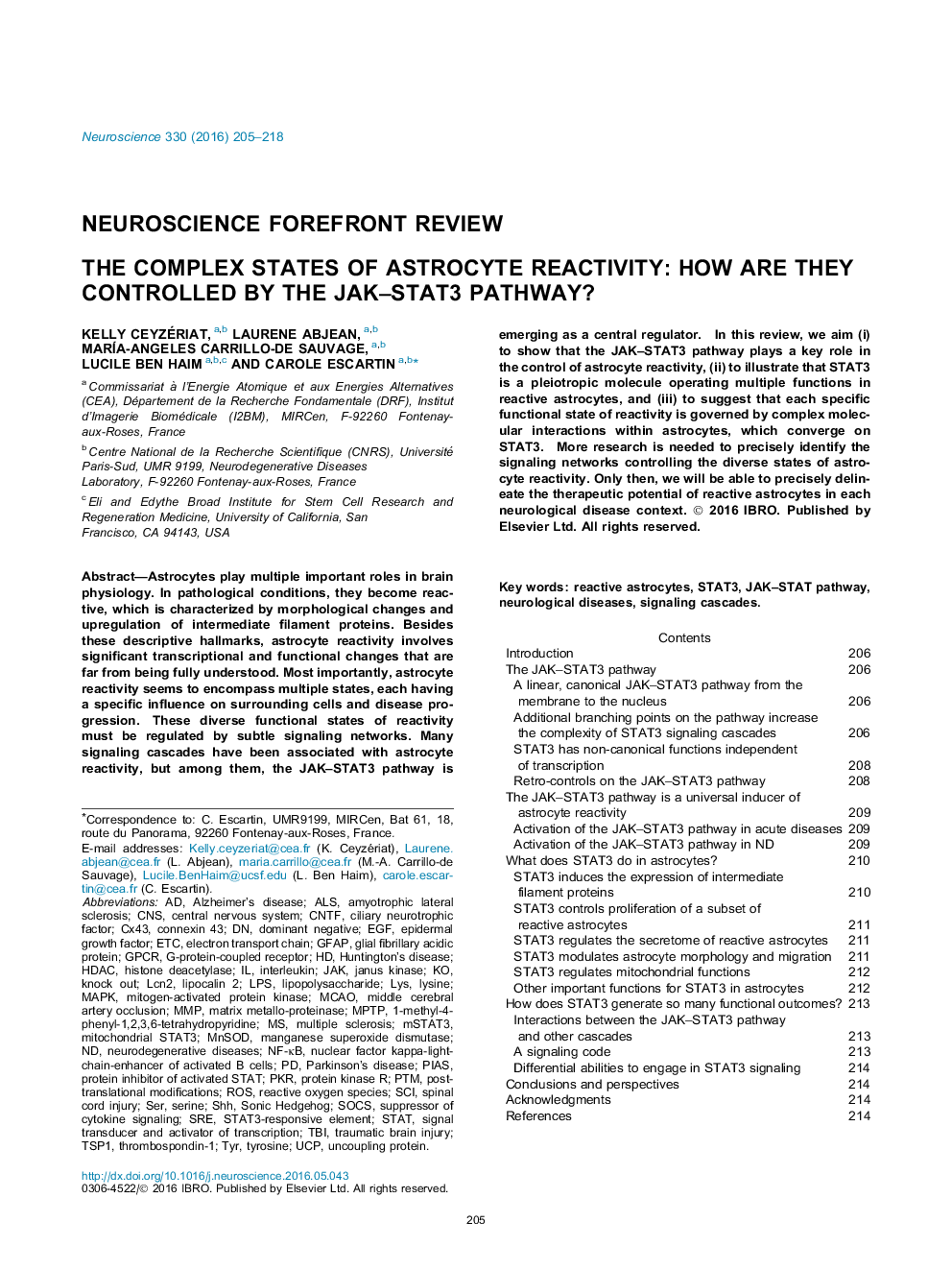| Article ID | Journal | Published Year | Pages | File Type |
|---|---|---|---|---|
| 6270910 | Neuroscience | 2016 | 14 Pages |
â¢Astrocyte reactivity occurs in virtually all brain diseases but is a heterogeneous response.â¢The JAK-STAT3 pathway plays a key role in the control of astrocyte reactivity.â¢STAT3 is a pleiotropic molecule operating multiple functions in reactive astrocytes.â¢Specific states of reactivity are driven by complex signaling cascades around STAT3.
Astrocytes play multiple important roles in brain physiology. In pathological conditions, they become reactive, which is characterized by morphological changes and upregulation of intermediate filament proteins. Besides these descriptive hallmarks, astrocyte reactivity involves significant transcriptional and functional changes that are far from being fully understood. Most importantly, astrocyte reactivity seems to encompass multiple states, each having a specific influence on surrounding cells and disease progression.These diverse functional states of reactivity must be regulated by subtle signaling networks. Many signaling cascades have been associated with astrocyte reactivity, but among them, the JAK-STAT3 pathway is emerging as a central regulator.In this review, we aim (i) to show that the JAK-STAT3 pathway plays a key role in the control of astrocyte reactivity, (ii) to illustrate that STAT3 is a pleiotropic molecule operating multiple functions in reactive astrocytes, and (iii) to suggest that each specific functional state of reactivity is governed by complex molecular interactions within astrocytes, which converge on STAT3.More research is needed to precisely identify the signaling networks controlling the diverse states of astrocyte reactivity. Only then, we will be able to precisely delineate the therapeutic potential of reactive astrocytes in each neurological disease context.
